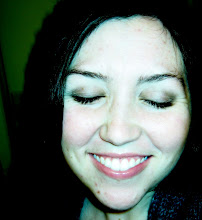
This book is meant to be a guide to cameras, lighting, and dramatic techniques. Even though it was copyrighted in 2006, two years after the other book I read, there was no noticeable improvement in the image quality or writing consistency. Again, the detail provided and overall image content was enough to clearly convey the author’s point.
The first three chapters provide some background information useful for any filmmaking process: story construction, cameras, and lighting. I did not gain anything new from these first few chapters having learned their contents previously in school or from books and because most everything seemed commonsense. However the following four chapters presented very practical information related to animation movie-making specifically. The first, fundamentals of animation acting, detailed the creation of an animation sequence which can be basically reduced to anticipation-action-reaction. Paying careful attention to the anticipation of the action and reaction to it will make the action itself more believable on film. Brierton also introduces a software program MagpiePro which breaks down audio by frame so that the animator knows at least what position the puppet’s mouth should be in for each frame. Key frames or key poses are also introduced which act as markers for bigger divisions of the action which are to be separated by a certain number of frames whose smaller movements will make the sequence of the action feel continuous.
Replacement animation is one technique that Brierton explained. He mentioned that it is often used for eye blinks (replacement eyelids) but can be used for dialogue (replacement mouths) and large expressions (replacement heads) as well. This technique is an alternative to animating the actual clay of the head of the puppet and was news to me. The replacement features are created from a rigid material and, compared to sculpting for each new frame, they would provide a relatively narrow range of expressions.
The final chapter which talked in detail about the MagpiePro software exposure sheets was the most helpful to me. By writing the words of the audio alongside frame numbers and breaking the audio down further by syllable, the dialogue animation process becomes a matter of following the road map you have created for yourself. This chapter was very exciting for me because I am most concerned about lining up the audio to make believable dialogue sequences.
What I took away from this book:
- Remember to include the anticipation of and reaction to the action being animated.
- Choose the animation technique that best fits your vision.
- Take advantage of software that can dramatically improve dialogue sequencing.
I am very glad to have learned of MagpiePro from this book; it was worth reading for that valuable knowledge alone. For basic ideas and a freely available material, I would recommend it to other students considering stop-motion animation projects.

No comments:
Post a Comment